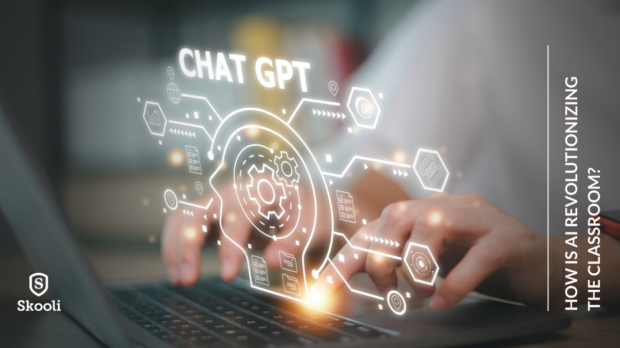How AI is Revolutionizing Learning in the Classroom
No matter what concerns people may have about generative AI such as ChatGPT, one thing is becoming clear: generative AI will have a role in education. Here are a few ways AI is changing learning in the classroom:
- Generative AI has the potential to be an invaluable tool for teachers. One of the most significant ways in which it can assist is by automating tasks such as lesson planning and grading, freeing up educators’ time to focus on other critical areas.
- Another way generative AI can benefit educators is through its ability to analyze large amounts of data related to student performance. By identifying patterns or trends in this data, teachers can gain insights into what teaching methods work best for certain groups of students or identify areas where particular students may need additional support.
- Furthermore, generative AI has the potential to promote equitable education by identifying areas where certain groups of students may be struggling or falling behind. With this information readily available, schools can take steps towards closing achievement gaps between different demographic groups.
- Generative AI can also be utilized in tutoring programs to provide one-on-one support for students who may need extra help. This type of AI system is able to recognize patterns in a student’s learning behavior and adjust its teaching approach accordingly.
Tutoring companies are testing the potential of AI in the online tutoring landscape. But can AI fulfill the roles and responsibilities of a tutor?
Bill Gates recently commented on the potential of artificial intelligence transforming education and learning at the ASU+GSV Summit in San Diego.
AI will eventually be “as good a tutor as any human ever could,” he said on stage during a Q&A. Gates, overall, was optimistic about the future of AI in education, while acknowledging the inevitable flaws in technology that will be faced along the way.
A policy research director at Open AI told CNN that fully relying on the tool is not recommended. It was a comment made in the context of using the tool to gauge whether students’ writing is generated or not generated by AI.
While educators have been asking for a ChatGPT AI text classifier feature that allows users to check if an essay was written by a human or AI. But even OpenAI warns it should be “taken with a grain of salt.”
AI makes mistakes. There’s still a lot of work that needs to be done.
So while generative AI has enormous potential as a supportive tool for educators, we will have to proceed with caution. Giving students access to on-demand tutoring is a valuable support. Giving students access to tutoring that still makes mistakes and hallucinates is a concern.
One solution as generative AI continues to develop is to also give students access to live, professional educators who can provide unlimited 24/7 on-demand homework help and 24-hour assignment review. Skooli’s tutors offer 1:1 sessions in a safe online environment.
Generative AI has a vital role to play in education. It is a powerful tool that can help teachers create more personalized learning experiences. For example, consider the possibilities for tools to benefit students who speak English as a second language or those who have different and complex learning styles.
However, it’s crucial to note that while generative AI has many advantages, it should not be used as a replacement for human interaction and personal teaching styles. Instead, it should act as an aid or support system for both teachers and students alike.
As this technology continues to evolve, we will undoubtedly see more exciting developments in the field of education. The possibilities are endless when it comes to how generative AI could transform our classrooms and change the way we think about teaching and learning.

